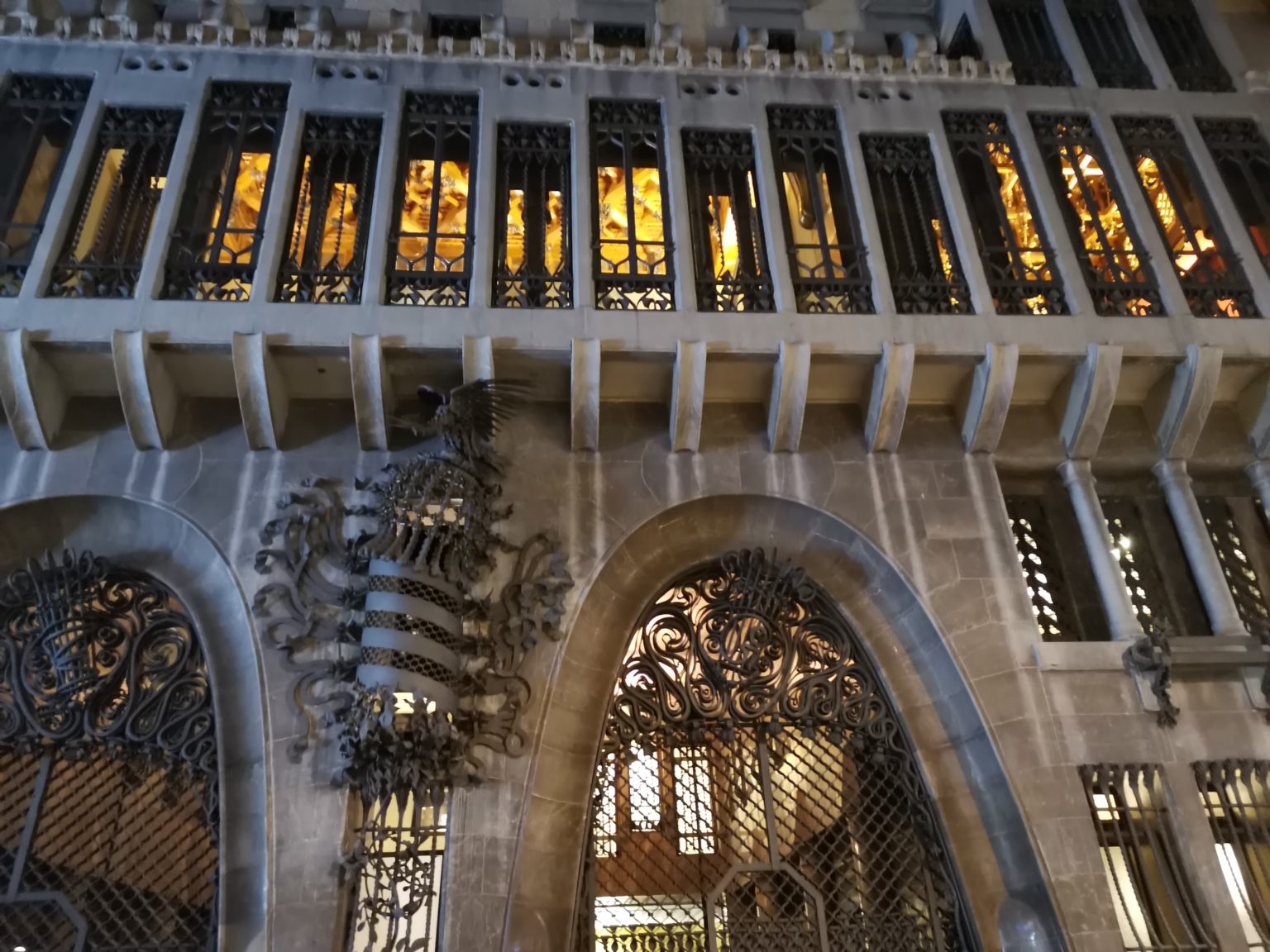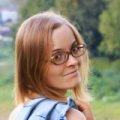Many famous buildings are interesting primarily from the outside; examining their façades is enough to make a fairly complete and vivid impression of them. The Palau Güell does not welcome such treatment for itself.
Enter it and go through it from the basement to the roof – otherwise, it will remain a mystery to you.
Temple of Faith in Man
This palace bears the name of its proprietor. The industrialist Eusebi Güell inherited an enviable fortune from his father. In contrast to his parent, he was not a cold-blooded businessman. Eusebi Güell had a reputation as a good-natured person, loved watercolor painting and literature, and followed new trends in architecture.
In search of his “own” architect, the entrepreneur turned his attention to young Catalan Antonio Gaudi who had already built a couple of mansions for wealthy citizens. After the successful implementation of several relatively small projects for his patron, Gaudi received a more difficult commission – the construction of a palace residence, in which the prosperous family could not only live but also receive their high-society guests and host organ music concerts.
Erecting a luxury building from top-quality materials would sound like a dream project… if the site allotted for the palace wasn’t completely unsuitable.
Firstly, Eusebi Güell bought a plot of land in El Raval neighborhood, which at the end of the 19th century was considered far from prestigious. Just opposite the site intended for the new building, the Edén Concert variety hall entertained the public with low-grade noisy performances.
Secondly, the luxurious palace had to be squeezed into a limited area – 18 by 22 meters – on a very narrow street. Walking along it, passersby could only see the lower floors of the houses.
Eusebi Güell refused to choose another site: he spent his childhood here in El Raval, and his father’s mansion was located here.
Gaudi solved the problem gracefully – he did not try to overpower the surroundings but instead constructed the building full of restrained dignity.
Its relatively minimalistic façade is reminiscent of a Venetian palazzo and hints that Güell has something in common with the great Italian patrons of the arts.
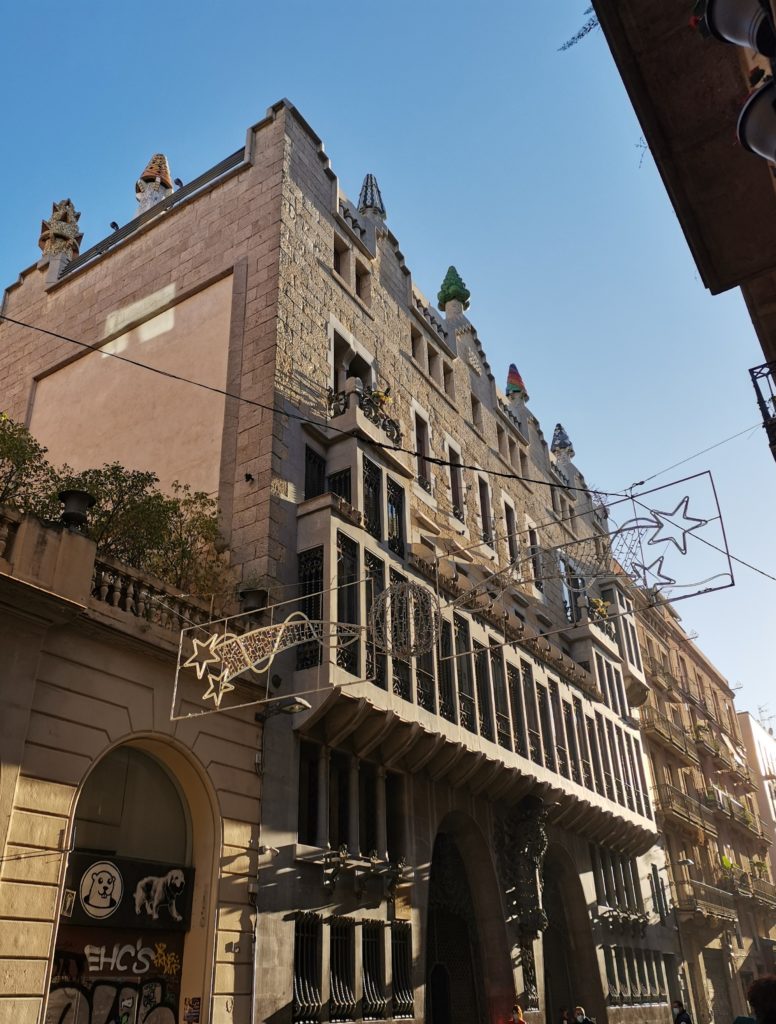
The Palau Güell, C. Nou de la Rambla, 3-5
The iron-barred gates shaped like parabolic arches are quite high. In the past, the guests of the Güell family led their horses inside through them.
The stables were in the basement. They appear sinister because of the frequent squat columns and artificial lighting. Not a single ray of sunshine illuminates their space.
After instructing the servants to take care of the horses, the guests went up to the rooms. The dark staircase didn’t look very friendly. That is how it looks now as well.
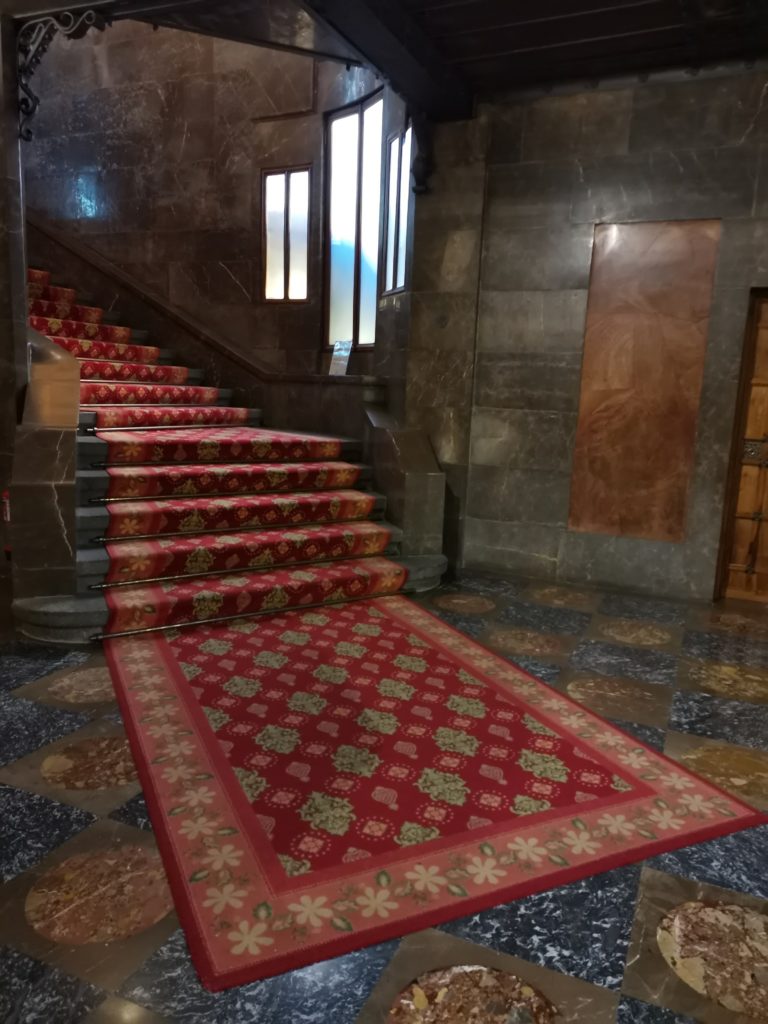
The majestic staircase
Rooms with parquet floors receive visitors a bit more cordially than the hall. Their interiors are designed in fairly heavy colors, with a predominance of brown, yet the ornaments on some walls and mosaic glass pierce the solemn atmosphere.
The diversity of the textures captures the imagination. The wooden details of the interior are inlaid with fragments of ebony, tortoiseshell, and ivory.
In addition to the appearance and structure of the palace, Antonio Gaudi thoroughly designed its furnishings. He crafted some of the interior items with his own hands.
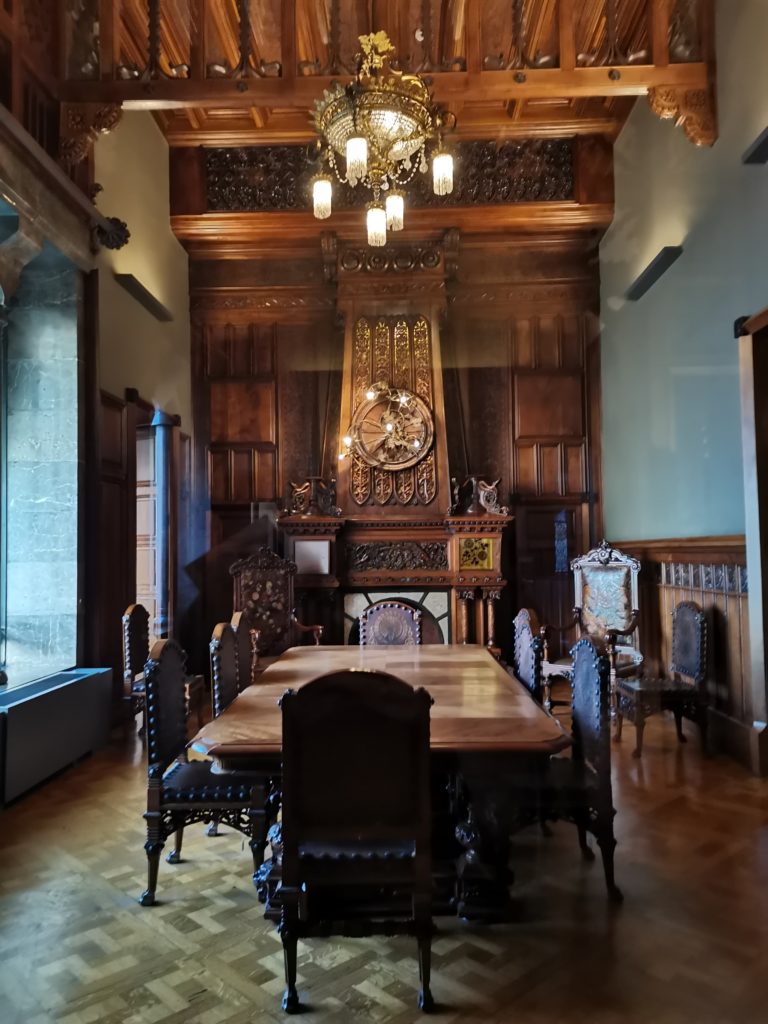
The dining room
Such an approach was typical for modernist architects – when building a mansion, they tried to fit all items in it under the general plan. In their opinion, a person living in a harmonious environment would reach for the bar set by the environment and strive for self-improvement.
Even toilets had to be beautiful. Many tourists visiting the Palau Güell chuckle when they see an elegant patterned urinal in a tiny room. However, is it really funny? I like it far more than Duchamp’s famous urinal…
Not all the interior items that the palace is furnished with today were originally created for it. A significant part of the delicate furniture you can see in its rooms is simply the works crafted by Catalan masters and coinciding with the building in style.

Art Nouveau living room set
The culmination of a walk around the palace is visiting its central hall, which gives integrity to the complicated inner structure of the construction.
The hall occupies a space extending three floors up and is crowned by a parabolic dome with holes: a relatively large central hole and many small ones arranged in rows. They let in the light.
Almost directly under this cosmic dome, the organ is hidden. It has been programmed to play a short piece of music every half an hour. In the 19th century, the central room of the Palau Güell served as a venue for concerts and the place where the members of the family appealed to God – there is an altar behind a massive door in one of the walls.

The penetrated cupola
The ambiance in the main hall is completely different than in the stables – we feel ascended from hell to purgatory.
The Palau Güell can also show us Eden. The roof terrace of the Palau Güell resembles a quaint garden with multi-colored Christmas trees. The “fur trees” are chimneys covered with fragments of broken ceramic tiles.
They express that amazing buoyant mood that is so typical of Gaudi’’s later architecture.
A spire rising among the chimneys is topped with a weather vane. The weather vane is decorated with two mismatched symbols – the sun and a bat. The latter seems to send us back to the gloomy underworld of the stables.
Is it true that the Palau Güell embodies the idea of the path from the barren inferno to fertile heaven? Some researchers believe so. Gaudi himself, if we asked him to answer such a question, would most likely shrug.
“I wouldn’t be able to explain my ideas to anyone,” he once admitted, “I don’t specify them. I had never had time to think about them. I’ve been working all the time.”
P.S. If you want to visit Palazzo Güell but there is still a long time before your vacation, use the online tour option on the palace website: https://inici.palauguell.cat/
- Gaudi: The life of a visionary by J Castellar-Gassol – Joan Castellar-Gassol, Barcelona, 1984
- Модерн: Климт, Гауди, Муха (The Modernisme: Klimt, Gaudi, Mucha) – Наталья Кортунова, АСТ, Москва, 2021
